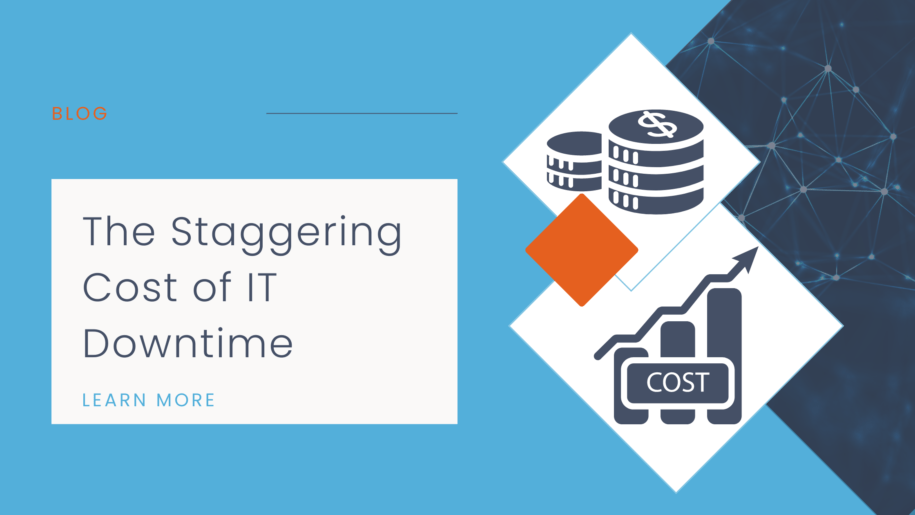It's a Critical Business Imperative
In today’s digital-first world, the reliability of IT systems is not just a technical concern—it’s a critical business imperative. The cost of IT downtime has skyrocketed in recent years, with far-reaching consequences that extend well beyond the immediate financial impact. Let’s delve into the true cost of IT downtime and why it’s more crucial than ever for businesses to prioritize system reliability.
The Financial Toll
The most immediate and quantifiable impact of IT downtime is its financial cost. Recent studies have shown that the average cost of IT downtime is a staggering $5,600 per minute. This translates to over $300,000 per hour, and for large enterprises, the figures can be even more alarming, potentially reaching millions of dollars per hour of downtime.
These costs stem from various sources:
- Lost Revenue: For e-commerce sites, financial institutions, and many other businesses, system downtime directly equates to lost sales and transactions.
- Decreased Productivity: When systems are down, employees cannot perform their jobs effectively, wasting labor costs.
- Recovery Costs: Getting systems back online often involves overtime pay for IT staff, potential hardware replacements, and other recovery expenses.
- Compliance Penalties: Downtime can lead to non-compliance and subsequent fines in regulated industries.
Beyond the Balance Sheet
While the financial impact is significant, the true cost of IT downtime extends far beyond immediate monetary losses:
- Reputation Damage: In an age where consumers expect 24/7 availability, downtime can severely damage a company’s reputation. A single outage can erode years-old customer trust. In competitive markets, dissatisfied customers may quickly switch to more reliable alternatives.
- Long-term Customer Loss: Studies show that 34% of businesses lose customers during a downtime event. What’s more concerning is that these customers may never return, resulting in a long-term impact on the company’s bottom line.
- Employee Morale and Stress: Frequent system outages can increase stress among employees, particularly IT staff, who must manage crises. This can result in burnout, decreased job satisfaction, and higher turnover rates.
- Missed Opportunities: During downtime, businesses lose current transactions and potentially miss out on new opportunities. Prospective clients or partners may move on if they can’t access your services when needed.
The Ripple Effect
In our interconnected business ecosystem, the impact of IT downtime isn’t limited to a single organization. Supply chain disruptions, delayed partnerships, and interrupted services can create a ripple effect that impacts entire industries.
Mitigation Strategies
Given the high stakes, businesses must prioritize strategies to minimize the risk and impact of IT downtime:
- Invest in Robust Infrastructure: Utilize redundant systems, load balancing, and cloud technologies to enhance reliability.
- Implement Comprehensive Monitoring: Use observability platforms to detect and address issues before they lead to downtime. These platforms provide real-time insights into system performance, allowing IT teams to manage potential problems proactively.
- Leverage Observability Platforms: Modern observability platforms go beyond simple monitoring. They offer deep insights into complex, distributed systems by collecting and analyzing metrics, logs, and traces. This holistic view enables faster problem identification and resolution, significantly reducing the risk of costly downtime.
- Develop and Test Disaster Recovery Plans: Regular drills can ensure that when downtime does occur, recovery is swift and efficient.
- Prioritize Cybersecurity: Cyber attacks cause many downtime events. A strong security posture is crucial for preventing these incidents.
- Continuous Training: Keep IT staff updated on the latest technologies and best practices for maintaining system uptime.
The Role of Observability Platforms
Observability platforms deserve special mention in the fight against IT downtime. These sophisticated tools provide several key benefits:
- Early Warning System: By continuously monitoring system health and performance, observability platforms can detect anomalies and potential issues before they escalate into full-blown outages.
- Rapid Troubleshooting: When problems do occur, these platforms offer detailed insights that can dramatically reduce Mean Time to Resolution (MTTR). This could save thousands of dollars per minute in downtime costs.
- Proactive Optimization: In addition to preventing downtime, observability platforms help teams optimize system performance, potentially improving overall efficiency and user experience.
- Cross-Stack Visibility: In today’s complex IT environments, issues can arise from interactions between multiple systems. Observability platforms provide a holistic view across the entire technology stack, making identifying and resolving complex problems easier.
- Cost-Effective 80/20 Solutions: Many observability platforms embody an “80/20” approach to features and cost. They often provide 80% of the most crucial observability features for only 20% of the cost of building a comprehensive, custom monitoring solution. This approach allows businesses to gain significant visibility into their systems and effectively combat downtime without the need for excessive spending or complex infrastructure. By focusing on the most impactful features, these platforms offer a highly cost-effective way to dramatically improve system reliability and reduce the risk of costly downtime.
By implementing a robust observability platform, businesses can significantly reduce their risk of costly downtime while improving overall system performance and reliability, often at a fraction of the cost of traditional solutions.
IT Downtime Costs are Staggering
IT downtime costs are staggering, with implications far beyond immediate financial losses. Maintaining robust, reliable IT systems cannot be overstated as businesses continue to digitize and rely more heavily on technology. By understanding the true cost of downtime and implementing comprehensive strategies to mitigate its risks—including the use of advanced observability platforms—organizations can protect their bottom line, reputation, and long-term success in an increasingly digital world.











